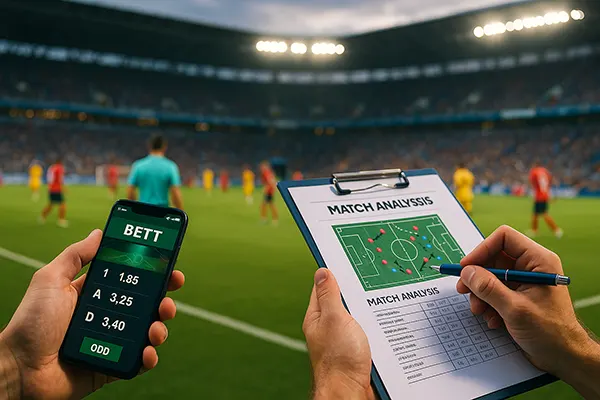
How Football Rule Changes in 2025 Are Reshaping Betting Strategies
The football landscape in 2025 is undergoing a profound transformation due to rule adjustments implemented by FIFA and regional associations. These changes are not just affecting the way games are played but also significantly altering how bettors approach matches. With stricter timekeeping, dynamic substitutions, and modified offside rules, betting models need to be updated accordingly. Understanding these shifts is crucial for bettors aiming to stay competitive and make data-informed decisions.
New Substitution Rules and Their Effect on Live Betting
One of the most impactful changes introduced in 2025 is the updated substitution policy. While previously teams could make five substitutions across three intervals, the new rules permit rolling substitutions, similar to those used in futsal. This allows coaches to adapt tactics in real time, injecting energy at key moments of the match. As a result, in-play betting markets have become more volatile and offer greater potential for both risk and reward.
Bettors must now consider player fitness, bench strength, and coach substitution patterns more seriously. For example, a manager known for aggressive second-half substitutions may change the game’s tempo dramatically, affecting goal markets and player-specific bets such as “next goalscorer” or “player to be carded.”
Additionally, rolling substitutions have led to greater parity late in matches, reducing the reliability of traditional late-goal strategies. Bettors need real-time analytics tools that track substitute impact and team momentum to remain ahead of the curve.
Strategic Implications for Half-Time and Full-Time Bets
Because substitutions can now drastically change a team’s dynamics mid-game, many professional bettors are recalibrating their approach to half-time/full-time markets. Historically, these bets relied heavily on predicting the trajectory of a match based on initial line-ups and momentum. Now, with increased flexibility, a dominant first half might not guarantee a continued performance in the second.
This unpredictability pushes bettors to integrate in-match data into their strategies. Smart wagers involve assessing the depth of each team’s bench, their historical success rate with substitutions, and tactical versatility. Teams with impactful benches may now be safer options for comeback-related bets.
Furthermore, bettors tracking specific leagues must consider how quickly these changes are being adopted and exploited. Some managers have embraced rolling substitutions enthusiastically, while others remain conservative. This disparity influences market inefficiency, which sharp bettors can capitalise on.
Timing Technology and the Rise of Precision Markets
Another significant change in 2025 is the introduction of semi-automated timekeeping technology. The clock now stops for goal celebrations, injuries, and substitutions—mirroring basketball and futsal systems. This new precision limits time-wasting and has increased net playing time by an average of seven minutes per match in top leagues.
This adjustment has profound implications for total goals and corner markets. With more effective playing time, the probability of match events—especially in the final minutes—has risen. Bettors must now reassess expected value (EV) models that previously relied on historical match durations that included “dead time.”
Additionally, the increase in stoppage time alters the behaviour of teams, particularly those chasing results. Aggressive formations in these added minutes boost the potential for last-minute goals and cards, expanding betting opportunities in “goal after 90 min” and “cards in injury time” markets.
How Bettors Can Use New Time Data
Bookmakers have responded by offering micro-time markets, such as “next event in the next five minutes” or “event in extra stoppage time.” Bettors should use tracking software and live feed analysis to identify peak activity periods based on time-stamped match data. This approach is especially useful in the Premier League and La Liga, where the new rules have been uniformly enforced.
Moreover, players and teams are reacting to this extra time with renewed strategic focus. Substitutes now play a critical role in these phases, often being introduced specifically to influence these extended minutes. Understanding these late-game substitutions is key for precision bettors.
Lastly, data from betting exchanges shows a growing preference for these refined time-based bets. The availability of higher odds and lower margins in niche markets gives a strategic advantage to those who analyse stoppage time behaviour meticulously.

Modified Offside Rules and Expected Goals Modelling
In February 2025, IFAB approved a modification of the offside rule to favour attackers: a player is now considered onside if any part of their body that can legally play the ball is in line with the second-last defender. This small but critical change has amplified scoring opportunities and reshaped attacking strategies.
This development demands recalibration of expected goals (xG) models used by professional and amateur bettors alike. As more borderline goals stand, xG values for strikers are trending higher, and match totals are frequently exceeding pre-2025 averages. In response, betting models need to be updated using recent match data under the new rules.
Moreover, player props such as “shots on target” or “first to score” have become more viable, especially for prolific attackers who frequently straddle the defensive line. Bettors should identify such players and leverage these markets for increased ROI.
Adapting Player Analysis Tools to New Offside Dynamics
One useful strategy is incorporating heatmaps and run direction data to assess how forwards adapt to the new offside rule. For instance, players who previously struggled with marginal calls are now thriving, increasing their scoring potential and bet reliability.
Some defensive units have yet to adjust tactically, creating value in matches involving high lines or slow defenders. These mismatches are gold mines for pre-match and in-play betting when exploited correctly with analytical tools.
In conclusion, bettors must refine their player analysis techniques to include post-2025 performance splits, focusing specifically on matches under the new offside interpretation. These shifts redefine how value is found in goalscorer and assist-related bets.
Popular articles
-
 Profession of a Cybersportsman in Dot...
Profession of a Cybersportsman in Dot...The world of esports has grown tremendously over the past …
-
 Understanding Accumulator Bets: Risk ...
Understanding Accumulator Bets: Risk ...Sports betting can be an exciting and lucrative hobby, but …
-
 Jack Draper’s Renewed Conviction: A G...
Jack Draper’s Renewed Conviction: A G...In the unpredictable world of tennis, where the spirit is …
